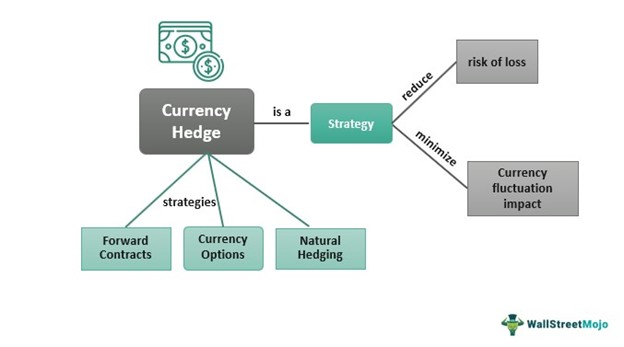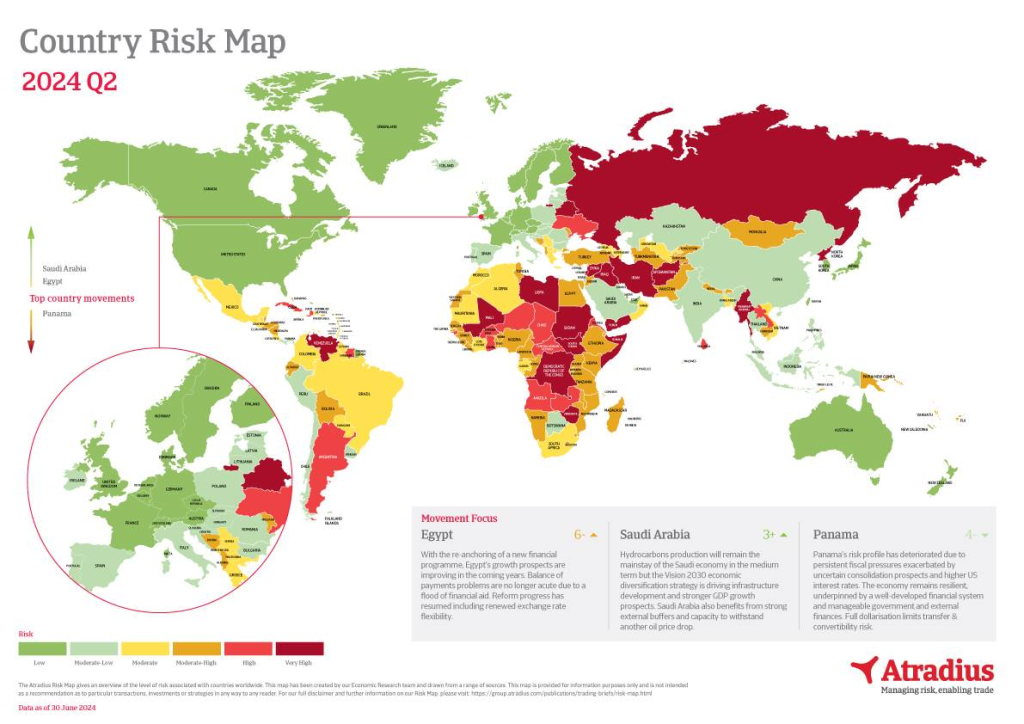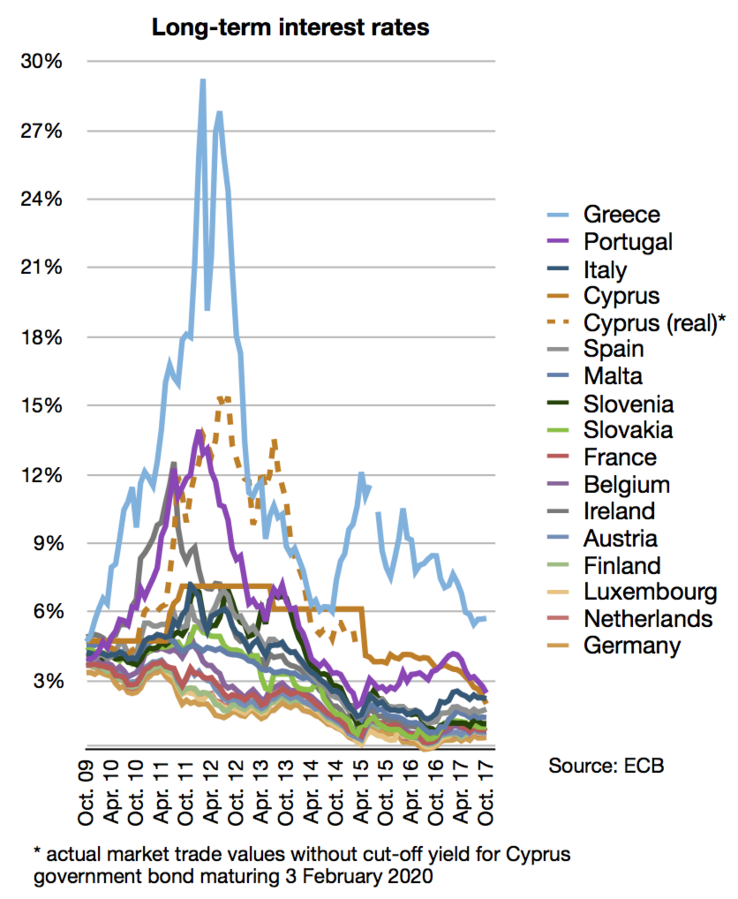Local: Risk Management Strategies Specific to European Markets
Lesson Learning Objectives:
- Understand how to manage currency risk in European investments. You’ll learn how tools like currency-hedged ETFs, forward contracts, and currency swaps help reduce the impact of euro fluctuations when investing internationally.
- Explore how political and regulatory changes affect European investments. You’ll learn how to reduce risks by using geographic diversification, tracking political events, and staying compliant with important EU regulations such as MiFID II.
- Learn strategies to manage interest rate risk in the Eurozone. You’ll discover how duration management, interest rate swaps, and inflation-linked bonds can protect your fixed-income investments when rates change.
- Gain insight into managing sector-specific risks. By spreading investments across different industries and using scenario analysis, you can prepare for risks tied to trade changes, regulation, or economic shifts in specific sectors.
11.1Risk Management Strategies Specific to European Markets
Risk management in European markets involves unique strategies tailored to the region’s economic landscape, regulatory framework, and currency dynamics. European investors must navigate a variety of risks, including currency fluctuations, political instability, and regulatory changes across different member states. Here are some key risk management strategies specific to the Eurozone and broader European markets:
Hedging Euro Currency Risks
One of the most significant risks for European investors, particularly those with international exposure, is currency risk. The euro’s value fluctuates against other major currencies, such as the U.S. dollar, British pound, and Swiss franc, impacting the returns on international investments. To manage this risk, European investors often use currency hedging strategies:
- Currency Hedged ETFs: Investors can use currency-hedged ETFs that neutralize the effects of euro fluctuations relative to other currencies. These ETFs aim to protect against adverse movements in the foreign exchange market, particularly when investing in U.S. or non-Eurozone assets.
- Forward Contracts: Currency forward contracts are another popular tool for hedging currency risk. These contracts lock in an exchange rate for a future transaction, helping investors mitigate the uncertainty of fluctuating euro exchange rates.
- Options and Currency Swaps: Currency options and swaps are also used to hedge against exchange rate volatility. These derivatives give investors flexibility by allowing them to either buy or sell currencies at a fixed rate or exchange one currency for another at a predetermined rate in the future.

Figure: Currency Hedge
Description:
This diagram explains the concept of a currency hedge, which is a strategy used to reduce risk of loss and minimize the impact of currency fluctuations. It identifies three key methods for implementing a currency hedge: Forward Contracts, Currency Options, and Natural Hedging. The figure illustrates the hierarchical relationship between these elements, showing how currency hedging can be employed to protect against adverse currency movements.
Key Takeaways:
- Currency hedging is a strategic approach to managing risks associated with currency volatility.
- The main strategies for currency hedging include forward contracts, currency options, and natural hedging.
- Currency hedging aims to reduce financial loss and minimize the impact of currency fluctuations on investments or business operations.
Application of Information:
Understanding currency hedging is vital for investors and businesses operating in international markets. By employing strategies like forward contracts or currency options, investors can protect against potential losses due to currency rate changes, thereby ensuring more stable financial outcomes. This knowledge helps in making informed decisions when dealing with foreign exchange risks.
Political and Regulatory Risk Management
Political and regulatory risks are heightened in Europe due to the diverse political landscape across EU member states. Events such as Brexit, elections, or policy changes in major economies like Germany and France can cause market volatility. To manage these risks, European investors employ the following strategies:
- Geographic Diversification: Investors diversify their portfolios across multiple European countries and sectors to reduce exposure to political or regulatory changes in any single market. For instance, an investor might spread their investments between Northern Europe (Germany, the Netherlands) and Southern Europe (Spain, Italy) to balance the risk.
- Monitoring Political Events: Active monitoring of political developments, such as elections or trade negotiations, helps investors make timely decisions. By staying informed, investors can reallocate assets or hedge positions ahead of potentially destabilizing events.
- Compliance with EU Regulations: European markets are heavily regulated by bodies such as the European Securities and Markets Authority (ESMA). Staying compliant with MiFID II and other regulatory frameworks helps protect against unexpected legal or financial penalties, ensuring smoother operations in cross-border investments.

Figure: Country Risk Map (2024 Q2)
Description:
The country risk map categorizes the global risk levels of various countries as of the second quarter of 2024. Countries are color-coded to represent different risk levels, ranging from low risk (green) to very high risk (dark red). The map highlights regions with significant changes, such as Saudi Arabia, Egypt, and Panama, marked for their notable shifts in risk levels. The focus areas provide insights into economic developments and potential implications for trade and financial stability.
Key Takeaways:
- Countries are classified by risk levels, with different colors indicating varying degrees of risk.
- Egypt’s risk rating improved due to new financial programs and government reforms.
- Saudi Arabia’s risk decreased due to growth in hydrocarbon production and expected economic resilience.
- Panama’s risk increased due to deteriorating fiscal performance and weaker economic activity.
Application of Information:
This risk map is useful for investors and businesses to understand global economic stability and potential trade risks. By identifying countries with rising or declining risks, businesses can adjust their strategies to mitigate potential risks or leverage emerging opportunities. The map also helps in planning international investments, considering the financial and economic risks of each country.
Interest Rate Hedging for Eurozone Bonds
Interest rate risk is another major concern for European investors, particularly in the fixed-income market. The European Central Bank (ECB) controls monetary policy in the Eurozone, and fluctuations in interest rates can significantly impact bond prices.
- Duration Management: To manage interest rate risk, investors may adjust the duration of their bond portfolios. Shortening duration reduces sensitivity to interest rate hikes, while lengthening duration can enhance returns in a falling interest rate environment.
- Interest Rate Swaps: Investors use interest rate swaps to hedge against rising rates. In an interest rate swap, one party exchanges a fixed interest rate for a floating rate, or vice versa. This allows investors to protect themselves from rising interest costs or to lock in stable returns in a fluctuating rate environment.
- Inflation-Linked Bonds: Investing in inflation-linked bonds (such as European government bonds) offers another layer of protection against rising inflation, which often leads to higher interest rates. These bonds adjust their payouts according to inflation, helping preserve purchasing power.

Figure: Long-term interest rates (Eurozone)
Description:
This line chart displays the long-term interest rates for Eurozone countries from October 2009 to October 2017. The rates are shown for countries like Greece, Portugal, Italy, Cyprus, Spain, Malta, and others. The graph highlights the sharp increase in interest rates in some countries, such as Greece and Cyprus, which experienced peaks above 20% during the European debt crisis between 2011 and 2013. After these peaks, the interest rates gradually declined across all countries, indicating improved economic stability.
Key Takeaways:
- Greece and Cyprus experienced the highest peaks, exceeding 25% during the crisis, highlighting significant financial distress.
- Most Eurozone countries had lower long-term interest rates by the end of 2017, indicating a more stable financial environment.
- Interest rates for countries like Germany, France, and the Netherlands remained relatively stable throughout the period, suggesting stronger economic conditions compared to countries hit harder by the crisis.
Application of Information:
Understanding long-term interest rates is crucial for investors and policymakers, as they reflect a country’s economic stability and borrowing costs. By analyzing these trends, investors can gauge risk levels and make informed decisions about bond investments and sovereign debt. Additionally, lower interest rates can indicate favorable conditions for borrowing and investment, while higher rates can signify financial instability or economic distress.
Managing Sector-Specific Risks
Different sectors in Europe come with unique risks. For example, the automotive sector is highly exposed to global trade tensions and regulatory changes around environmental standards, while the financial sector is sensitive to interest rate changes and ECB policies.
- Sector Diversification: To mitigate these sector-specific risks, European investors often diversify their portfolios across various industries. For instance, they might balance automotive holdings with investments in renewable energy or technology, sectors that may perform better under different economic conditions.
- Scenario Analysis: Conducting scenario analysis helps investors assess how different events, such as changes in trade policy or new EU regulations, might impact specific sectors. This allows investors to preemptively adjust their portfolios in response to anticipated risks.

Figure: European PE investments – deals by sector
Description:
This stacked bar chart presents the distribution of European Private Equity (PE) investments across different sectors from 2014 to 2023. The chart reveals the sector-wise percentage share of PE deals, showcasing changes in sectoral focus over time. Notable sectors include Energy, Financial, Healthcare, Software & Technology, Services, Industrial, and Consumer. The Software & Technology sector has seen significant growth, increasing from 13% in 2018 to 30% in 2023, indicating rising investment in digital solutions. Meanwhile, the Industrial sector has declined from 26% in 2014 to 12% in 2023, showing a reduced focus.
Key Takeaways:
- The Software & Technology sector has experienced substantial growth, becoming the leading sector for PE investments by 2023.
- The Industrial sector has seen a consistent decline over the years, indicating a shift in investment priorities.
- The Healthcare sector has remained stable, maintaining a presence between 18% and 26% throughout the period.
- Energy and Financial sectors have had fluctuating yet notable investments, suggesting varying levels of investor confidence.
- Consumer sector has maintained a consistent presence, demonstrating steady investment interest.
Application of Information:
Understanding sectoral trends in Private Equity investments is crucial for investors and business leaders, as it helps identify emerging opportunities and shifting market preferences. By analyzing these trends, investors can adjust their portfolio allocations, and businesses can identify strategic growth sectors to focus on for potential investment and expansion. This data is particularly useful for making informed decisions in sector-specific investments and understanding overall market dynamics.
Conclusion
Risk management strategies in European markets must account for the unique dynamics of the region, including currency fluctuations, political events, interest rate changes, and sector-specific regulations. Hedging against euro currency risks, actively managing interest rate exposure, and diversifying across both sectors and geographies are essential for building resilient portfolios. By leveraging tools like currency-hedged ETFs, forward contracts, and scenario analysis, investors can navigate the complexities of the Eurozone and broader European markets while minimizing their exposure to volatility and risk.
Key Lesson Information:
- Currency risk can be managed through hedging tools like currency-hedged ETFs, forward contracts, and currency options or swaps. These help protect your returns when the euro changes value against other major currencies.
- Geographic diversification within Europe reduces political and regulatory risk. By investing in multiple countries—such as Germany, the Netherlands, Italy, or Spain—you lower your exposure to problems in any one market.
- Tracking political events and regulatory changes helps you make better decisions. Staying updated on elections, trade policies, and changes in EU laws allows investors to prepare for market movements and protect their portfolios.
- Complying with EU regulations like MiFID II ensures that your investments are legally protected and aligned with European standards, especially in cross-border trading and reporting.
- Interest rate risk is managed through duration adjustments and interest rate swaps. Shorter durations lower risk during rate hikes, while inflation-linked bonds protect against rising inflation by adjusting payments.
- Sector-specific risks can be reduced through sector diversification and scenario analysis. For example, if the automotive sector faces trouble due to regulations, investments in renewable energy or technology can help keep your portfolio balanced.
Closing Statement:
Risk is part of every investment, but in Europe, it comes with extra layers such as political shifts, currency changes, and regulatory updates. This section explains how to protect your money by using specific tools and strategies built for European investors.

